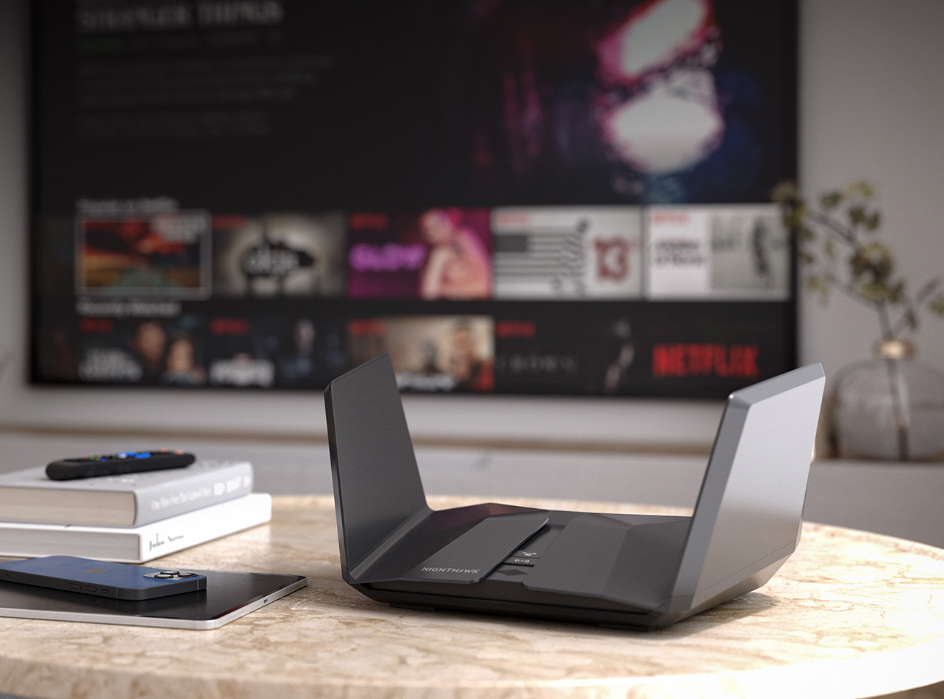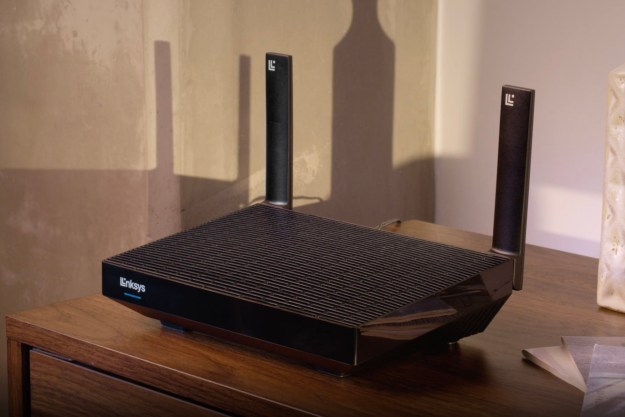It’s the biggest change to Wi-Fi in nearly three decades, and it’s finally here — adding extra throughput and room for your data to stretch its legs and really start running.
The change? Wi-Fi 6e, a new standard for wireless signals that expands the existing Wi-Fi 6 router specification, opening up a third swath of spectrum in the 6GHz range, beyond the 5GHz and 2.4GHz used by existing Wi-Fi devices. It’s more than just a futuristic spec, though.
At CES 2021, Netgear announced the new Nighthawk RAXE500 tri-band router, one of the world’s first Wi-Fi 6e routers, the company said. It will be available in the first quarter of 2021 at about $600.
The router has up to 200% more available spectrum than dual-band devices, and with speeds up to 10.8Gbps, it should let you stream Netflix around your entire home to your heart’s content.

“The proliferation of Wi-Fi over the last few decades first stressed the 2.4GHz band and then eventually the 5GHz band with Wi-Fi 4, 5, and 6,” said Phil Solis, research director at IDC. “As regulatory bodies around the world open up the 6GHz band, Wi-Fi 6e networks will provide enabled devices with the breathing room to use large channels even in dense and congested areas with higher average data rates and lower latency.”
It’s not alone. Late last week, Asus announced the market availability of the ROG Rapture GT-AXE11000, which it too called the world’s first Wi-Fi 6e router. The ROG Rapture supports combined concurrent Wi-Fi speeds of up to nearly 1,1000 Mbps, Asus said: 1,148 Mbps on the 2.4 GHz band, 4,804 Mbps on the 5 GHz band and 4,804 Mbps on the 6 GHz band. Regardless of which is first to market, your Internet’s going to start blazing.
The FCC officially voted to approve Wi-Fi 6e in April of 2020, opening up 1,200MHz of the 6GHz spectrum. The agency noted that Wi-Fi 6 will be over two-and-a-half times faster than the current standard and will offer better performance for American consumers. And just in time for CES, the Wi-Fi Alliance — the trade group that drives Wi-Fi adoption — announced that it was ready to begin certifying devices as compliant. In other words, here we go!
But a router alone won’t do it, even the world’s best router. You need devices that also support 6e — and since Qualcomm introduced the Snapdragon 888 processor for phones in December, which supports Wi-Fi 6e, we expect new mobile phones and laptops to fully embrace it in 2021. Notably, we’ve heard rumors galore about the Samsung Galaxy S21, which we anticipate seeing at CES. Samsung’s Galaxy phones have been at the forefront of new tech and are likely to support the new 6GHz tech. Watch for other flagship phones to quickly follow suit.
Curious about the gory details? Wi-Fi 6e works similarly to Wi-Fi 6 on 5GHz today, but the implementation comes with non-overlapping channels, meaning you’ll get 14 additional 80 MHz channels and seven additional 160 MHz channels. The good news: Any device labeled as Wi-Fi 6e-compliant will be backward compatible with older Wi-Fi routers, but you won’t gain any of the advantages from the 6GHz band.
Editors' Recommendations
- What is Wi-Fi 7: Everything you need to know about 802.11be
- The new ROG Zephyrus gaming laptops look like absolute stunners
- Google Nest Wi-Fi Pro adds Wi-Fi 6E but loses compatibility
- This dongle can bring a superfast Wi-Fi 6 connection to your old computer
- Google’s Nest Wifi Pro leaks weeks ahead of Pixel event





